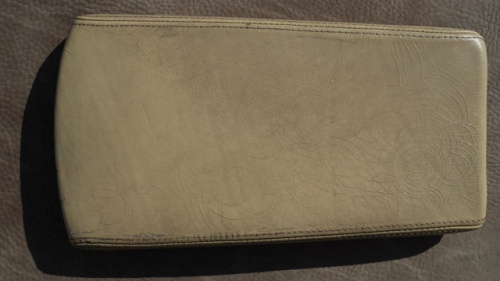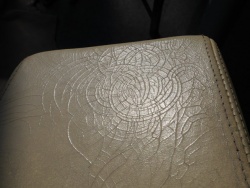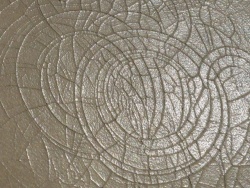Difference between revisions of "Crosslinker"
| Line 18: | Line 18: | ||
==Spider's web effect by aziridine crosslinker== | ==Spider's web effect by aziridine crosslinker== | ||
| − | The first generations of aziridine-based crosslinkers resulted in the formation of the so-called spider's web effect. The phenomenon first appeared in the previous century. The crosslinker reacted with time and became so hard that the surface [[leather damages|broke years later]], causing a fracture pattern similar to that of a spider's web. [[car leather#Jaguar|Jaguar]] and other British brands were affected. Nowadays, this problem | + | The first generations of aziridine-based crosslinkers resulted in the formation of the so-called spider's web effect. The phenomenon first appeared in the previous century. The crosslinker reacted with time and became so hard that the surface [[leather damages|broke years later]], causing a fracture pattern similar to that of a spider's web. [[car leather#Jaguar|Jaguar]] and other British brands were affected. Nowadays, this problem seldom. |
| Line 30: | Line 30: | ||
<p align=center> | <p align=center> | ||
''Cracking of the surface due to excessive crosslinking of the aziridine crosslinker.''<br></p> | ''Cracking of the surface due to excessive crosslinking of the aziridine crosslinker.''<br></p> | ||
| + | <p> </p> | ||
| + | |||
| + | <p align=center> | ||
| + | [[bild:Hard-finish-crack-leather-01.jpg|500px]] | ||
| + | </p> | ||
| + | <p align=center> | ||
| + | ''Typical cracks in the [[finish]] of modern leather due to poor [[leather quality|finish quality]].''<br></p> | ||
<p> </p> | <p> </p> | ||
Revision as of 17:39, 15 June 2022
Contents
Crosslinker as additive
The binders of the top coat and pigment leather paint are generally based on polyurethane. "Crosslinkers" are additives which are used in aqueous top coats and pigment paint based on polyurethane. The crosslinker "crosslinks" the polyurethane binders and thereby ensures the necessary fastness properties of the leather surface. By "cross-linking", the leather surfaces of pigmented leather are more resistant to abrasion, moisture or solvents.
Isocyanate crosslinkers have proven particularly effective on demanding surfaces such as automotive leathers. Isocyanate crosslinkers do not turn yellow and are also very resistant to ageing. To this end, isocyanate crosslinkers are easy to use and are not harmful to health or the environment after processing.
Aziridine crosslinkers are common in furniture leather.
Crosslinkers generally contain organic solvents. These are necessary in order to achieve sufficient mixing with the substance to be cross-linked. The manufacturers of crosslinkers are trying to reduce this solvent proportion to zero.
Other top coat additives
In addition to the crosslinkers, there are many more additives for the top coat. Some additives change the haptic evaluation of leather surfaces. Additives can influence the grip of the leather. It can feel more waxy, rough or smooth.
Spider's web effect by aziridine crosslinker
The first generations of aziridine-based crosslinkers resulted in the formation of the so-called spider's web effect. The phenomenon first appeared in the previous century. The crosslinker reacted with time and became so hard that the surface broke years later, causing a fracture pattern similar to that of a spider's web. Jaguar and other British brands were affected. Nowadays, this problem seldom.
Cracking of the surface due to excessive crosslinking of the aziridine crosslinker.
Typical cracks in the finish of modern leather due to poor finish quality.
Additional information











 a kotori web solution
a kotori web solution